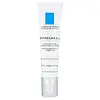What's inside
What's inside
 Key Ingredients
Key Ingredients

 Benefits
Benefits

 Concerns
Concerns

 Ingredients Side-by-side
Ingredients Side-by-side

Water
Skin ConditioningCyclohexasiloxane
EmollientIsononyl Isononanoate
EmollientPropylene Glycol
HumectantIsohexadecane
EmollientNiacinamide
SmoothingPEG-100 Stearate
Glyceryl Stearate
EmollientCetyl Alcohol
EmollientArgilla
AbrasiveCarbomer
Emulsion StabilisingSodium Hydroxide
BufferingCapryloyl Glycine
CleansingCapryloyl Salicylic Acid
ExfoliatingCitric Acid
BufferingXanthan Gum
EmulsifyingAcrylates Copolymer
Salicylic Acid
MaskingIodopropynyl Butylcarbamate
PreservativeChlorhexidine Digluconate
AntimicrobialPiroctone Olamine
PreservativeParfum
MaskingWater, Cyclohexasiloxane, Isononyl Isononanoate, Propylene Glycol, Isohexadecane, Niacinamide, PEG-100 Stearate, Glyceryl Stearate, Cetyl Alcohol, Argilla, Carbomer, Sodium Hydroxide, Capryloyl Glycine, Capryloyl Salicylic Acid, Citric Acid, Xanthan Gum, Acrylates Copolymer, Salicylic Acid, Iodopropynyl Butylcarbamate, Chlorhexidine Digluconate, Piroctone Olamine, Parfum
Hydroquinone 5%
StabilisingTretinoin 0.03%
Skin ConditioningDexamethasone 0.03%
Propylene Glycol 0.3%
HumectantCetyl Alcohol
EmollientMethyl 2,4-Dihydroxybenzoate
Skin ConditioningPropylparaben
PreservativeBHA
AntioxidantBHT
AntioxidantPEG-40 Glyceryl Stearate
EmulsifyingSodium Cetearyl Sulfate
CleansingParaffin
PerfumingIsopropyl Myristate
EmollientPetrolatum
EmollientEthylhexyl Methoxycinnamate
UV AbsorberButyl Methoxydibenzoylmethane
UV AbsorberPanthenol
Skin ConditioningAlcohol Denat.
AntimicrobialCamphor
MaskingTitanium Dioxide
Cosmetic ColorantSorbitol 70%
HumectantTocopheryl Acetate
AntioxidantCitric Acid
BufferingAscorbic Acid
AntioxidantLactic Acid
BufferingDisodium EDTA
Water
Skin ConditioningHydroquinone 5%, Tretinoin 0.03%, Dexamethasone 0.03%, Propylene Glycol 0.3%, Cetyl Alcohol, Methyl 2,4-Dihydroxybenzoate, Propylparaben, BHA, BHT, PEG-40 Glyceryl Stearate, Sodium Cetearyl Sulfate, Paraffin, Isopropyl Myristate, Petrolatum, Ethylhexyl Methoxycinnamate, Butyl Methoxydibenzoylmethane, Panthenol, Alcohol Denat., Camphor, Titanium Dioxide, Sorbitol 70%, Tocopheryl Acetate, Citric Acid, Ascorbic Acid, Lactic Acid, Disodium EDTA, Water
 Reviews
Reviews

Alternatives
Ingredients Explained
These ingredients are found in both products.
Ingredients higher up in an ingredient list are typically present in a larger amount.
Cetyl Alcohol is a fatty alcohol. Fatty Alcohols are most often used as an emollient or to thicken a product.
Its main roles are:
Though it has "alcohol" in the name, it is not related to denatured alcohol or ethyl alcohol.
The FDA allows products labeled "alcohol-free" to have fatty alcohols.
Learn more about Cetyl AlcoholCitric Acid is an alpha hydroxy acid (AHA) naturally found in citrus fruits like oranges, lemons, and limes.
Like other AHAs, citric acid can exfoliate skin by breaking down the bonds that hold dead skin cells together. This helps reveal smoother and brighter skin underneath.
However, this exfoliating effect only happens at high concentrations (20%) which can be hard to find in cosmetic products.
Due to this, citric acid is usually included in small amounts as a pH adjuster. This helps keep products slightly more acidic and compatible with skin's natural pH.
In skincare formulas, citric acid can:
While it can provide some skin benefits, research shows lactic acid and glycolic acid are generally more effective and less irritating exfoliants.
Most citric acid used in skincare today is made by fermenting sugars (usually from molasses). This synthetic version is identical to the natural citrus form but easier to stabilize and use in formulations.
Read more about some other popular AHA's here:
Learn more about Citric AcidPropylene Glycol is an odorless, colorless liquid. As a humectant, it helps skin retain moisture. It also aids in delivering active ingredients.
Another role of this ingredient is preventing a product from melting or freezing. Propylene glycol also adds antimicrobrial properties to a product, elongating product lifespan.
This ingredient is considered an organic alcohol and commonly added into both cosmetics and foods.
Those with sensitive skin or conditions may develop a rash when using this ingredient.
Learn more about Propylene GlycolWater. It's the most common cosmetic ingredient of all. You'll usually see it at the top of ingredient lists, meaning that it makes up the largest part of the product.
So why is it so popular? Water most often acts as a solvent - this means that it helps dissolve other ingredients into the formulation.
You'll also recognize water as that liquid we all need to stay alive. If you see this, drink a glass of water. Stay hydrated!
Learn more about Water